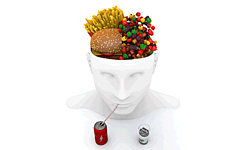Dietary Messaging April 2017
Want more free featured content?
Subscribe to Insights in Brief

University of Northern Iowa (Cedar Falls, Iowa) associate professor of nutrition Oksana Matvienko observed that many fictional picture books for children contain creative and positive messages about dietary behavior. But Dr. Matvienko also found that in the vast majority of these books, "problem-solving strategies and actions do not align with those endorsed by nutrition professionals," This finding indicates a potential area of concern for policy makers and health-care professionals.
In the soft-drink sector, consumer demand for more healthful drink options is increasing, which suggests that messaging can be successful. Health concerns about drink ingredients, not interest in weight management, seem to be driving consumer demand's shift away from soda (including diet soda). A study funded by the American Beverage Association (Washington, DC) showed no notable reduction in caloric intake per consumer in 2015, and according to data-service provider SPINS (Chicago, Illinois), US sales of natural and organic beverages and foods have increased by 23% during the past two years. Big soda players such as PepsiCo (Purchase New York) and the Coca-Cola Company (Atlanta, Georgia) are reacting by purchasing smaller beverage companies that specialize in drinks that consumers perceive as healthful—for example, kombucha and cold-pressed juices.
Social cueing may be driving changes in consumers' consumption patterns, and recent research with nonhuman species sheds light on how such effects may obtain. Carpenter ants acquire their own personal information about food safety while foraging, but they also acquire food information through trophallaxis—a process in which organisms socially tag food as they exchange it from mouth to mouth. Essentially, trophallaxis codes food with a scent that tells ants it is safe, and this social information overrides personal assessments of food. During recent experiments, biologists at IFIBYNE UBA-CONICET (Institute of Physiology, Molecular Biology and Neuroscience; Buenos Aires, Argentina) manipulated trophallaxis by coating toxic food with the social scent that communicates food safety. Ants ate that toxic food without hesitation because the social information overrode personal information about the toxins that the ants had acquired beforehand. The results show the profound influence of social information in a nonhuman species that operates according to social structures similar to those of humans.